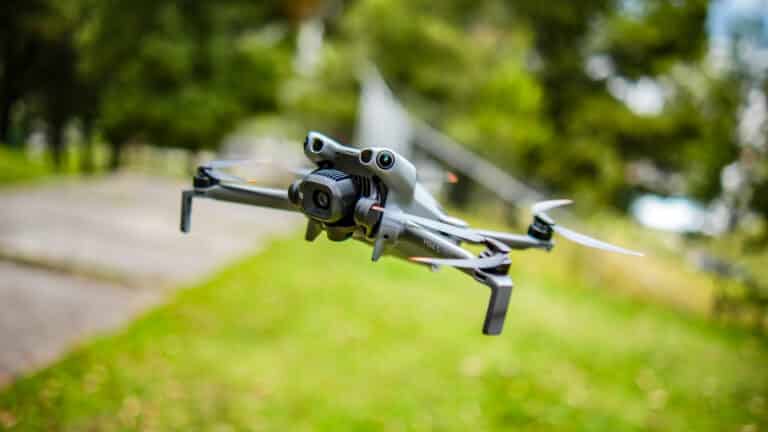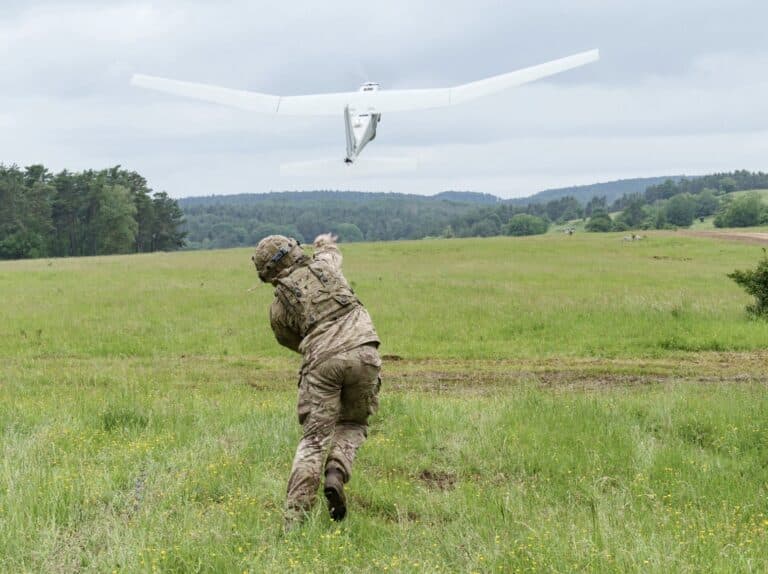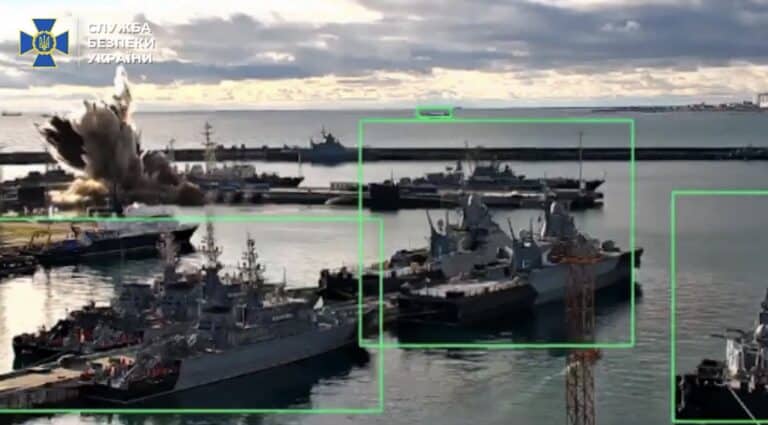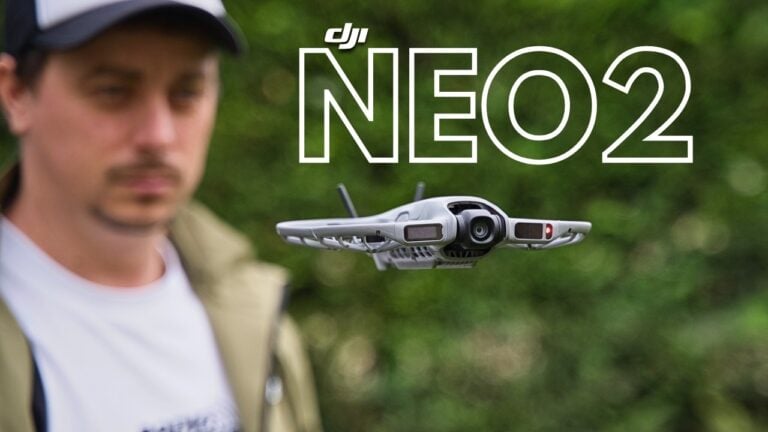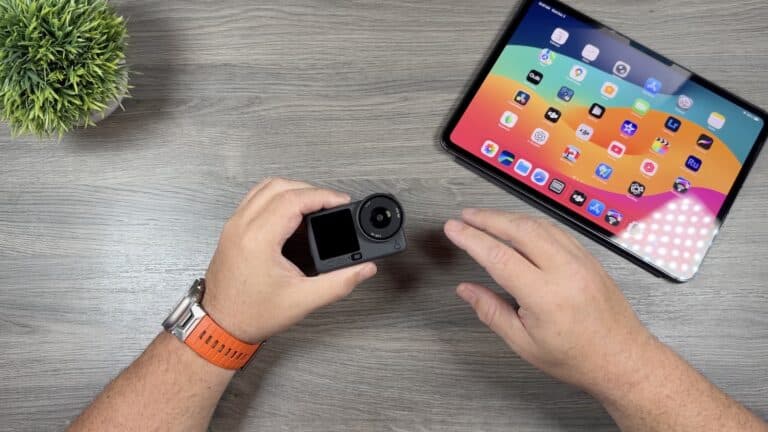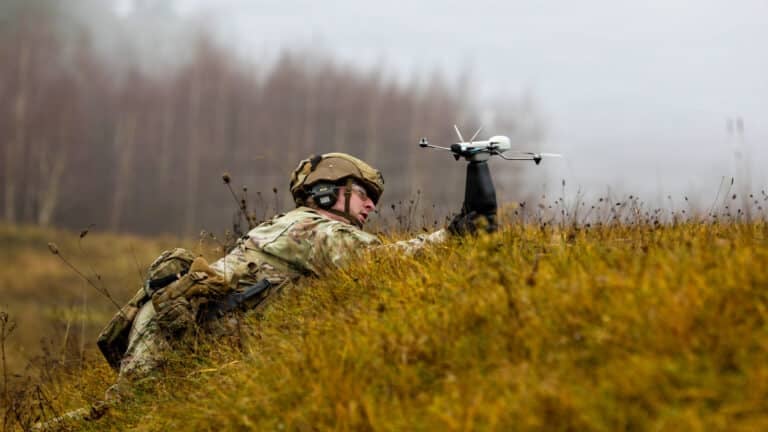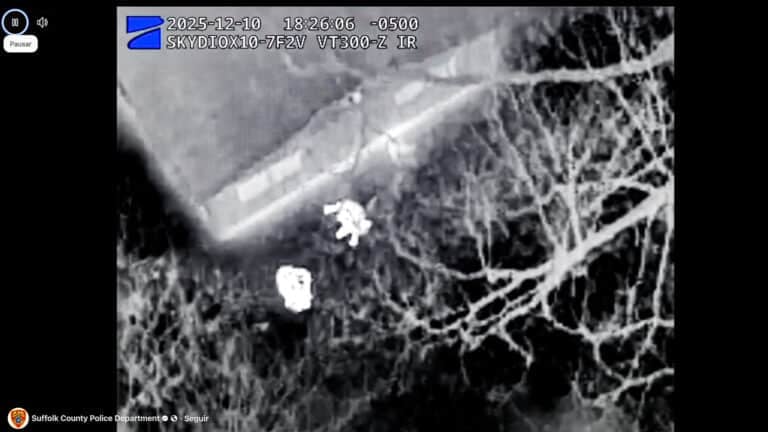Amazon Faces Second FAA Probe After Waco Drone Clips Internet Cable

Amazon Drone Deals: DJI Mini 5 Pro Fly More Combo with DJI RC2 now for $1,099!
Amazon is under federal investigation for the second time in two months after one of its Prime Air delivery drones sheared an internet cable in Waco, Texas last week.
The incident occurred just 13 days after Amazon launched drone delivery service in the central Texas city.
What Happened in Waco
Amazon’s MK30 drone had just completed a package delivery on November 18 around 12:45 PM Central when things went wrong.
As the hexacopter ascended from a customer’s yard, one of its six propellers became entangled in an overhead internet cable, according to CNBC, which viewed and verified video of the incident.
The drone cut through the wire line completely.
Its motors then shut down and the aircraft descended on its own, landing with propellers windmilling slightly. The drone remained largely intact beyond minor propeller damage.
“A MK30 drone struck a wire line in Waco, Texas, around 12:45 p.m. local time on Tuesday, November 18,” the FAA said in a statement to Reuters. “The FAA is investigating.”
The National Transportation Safety Board said it is aware of the incident but has not opened its own probe.
Amazon’s Response
Amazon confirmed the incident and characterized the drone’s behavior as working as designed.
The company said the aircraft performed a “safe contingent landing” after clipping the cable, referring to the automated process that allows its drones to land safely in unexpected conditions.
“There were no injuries or widespread internet service outages,” an Amazon spokesperson told CNBC. “We’ve paid for the cable line’s repair for the customer and have apologized for the inconvenience this caused them.”
The spokesperson noted that the drone had successfully completed its package delivery before the cable strike.
Second Federal Probe in Two Months
The Waco incident adds to a mounting list of Prime Air problems in 2025.
In October, two Amazon drones collided with a construction crane in Tolleson, Arizona. One caught fire after impact. Both the FAA and NTSB opened investigations into that incident, which remain active.
Amazon paused operations for just 48 hours before resuming flights in Arizona.
Days later, another MK30 made an unplanned landing on a Goodyear, Arizona sidewalk just 5 feet (1.5 meters) from a resident checking his mailbox.
Earlier in 2025, an MK30 dropped a customer’s package into a swimming pool in July. In May, a drone made what Amazon called a “precautionary controlled landing” at a Tolleson apartment complex.
The company suspended all U.S. operations in January after two drones crashed during testing at its Oregon facility. Those crashes were caused by faulty LiDAR sensors that confused rain for the ground.
Waco Operations Just Getting Started
Amazon had only begun delivering packages in Waco on November 5, 2025.
The city represented the company’s fourth active U.S. market and came just two days after launching service in Pontiac, Michigan. Amazon promoted the rapid expansion as evidence it had resolved the technical issues that grounded its fleet earlier this year.
The MK30 drones feature what Amazon calls “sense and avoid” technology designed to detect and navigate around obstacles including people, pets, and property.
Amazon recommends customers maintain “about 10 feet of open space” on their property for drone deliveries.
The Waco service covers a 7-8 mile (11.3-12.9 kilometer) radius from Amazon’s fulfillment center. Prime members pay $4.99 per delivery while non-members pay $9.99.
Amazon’s Ambitious Goals Face Reality
Amazon aims to deliver 500 million packages by drone annually by the end of the decade.
But progress has been slow. The company first announced drone delivery ambitions in 2013 when founder Jeff Bezos predicted the service would launch within “four, five years.”
More than a decade later, Amazon operates in just a handful of U.S. markets while facing competition from Walmart, which has partnered with Wing and Zipline to complete over 150,000 drone deliveries since 2021.
The probe comes as Amazon vies to expand drone deliveries to more pockets of the U.S. and faces stiffer competition from Walmart, which has also begun drone deliveries in multiple states.
DroneXL’s Take
This cable strike exposes a fundamental tension in Amazon’s drone delivery strategy: the company is expanding faster than it can perfect operations.
Waco wasn’t even two weeks old when this incident happened. The city had barely gotten used to the idea of drones overhead before one was tangling with infrastructure.
We’ve now documented six significant Prime Air incidents in 2025 alone. The January grounding following Oregon crashes. The May apartment landing. The July pool drop. The October crane collision that sparked a fire. The sidewalk landing 10 days later. And now Waco.
At what point does “safe contingent landing” stop being a feature and start being an admission that these drones encounter unexpected situations too often?
The MK30’s sense-and-avoid technology is supposed to detect obstacles. But overhead wires present a notorious challenge for any aircraft. They’re thin, often hard to see, and ubiquitous in American neighborhoods. If Amazon’s drones can’t reliably navigate around utility lines during routine residential deliveries, that’s a systemic problem, not a one-off event.
Compare this to Walmart’s approach. The retail giant has completed over 150,000 deliveries since 2021 by partnering with established operators like Wing and Zipline rather than building everything in-house. Their expansion has been measured, methodical, and notably incident-free in the headlines.
Amazon’s playbook is different: move fast, accept losses, outlast competitors through sheer capital. That works for e-commerce market share. It’s riskier when the losses involve federal investigations and drones landing near pedestrians.
The economics already don’t work. As we detailed in our December 2024 analysis, internal projections showed delivery costs around $63 per package against customer pricing of $4.99-$9.99. That math only improves with volume and operational efficiency. Neither improves when you’re generating FAA probes faster than you’re generating profits.
Amazon clearly believes the technology fundamentally works. They resumed Arizona flights 48 hours after the crane crash. They’re already expanding to Hazel Park, Michigan and planning additional Texas markets.
But confidence and competence aren’t the same thing. Two active federal investigations, a string of unplanned landings, and now infrastructure damage in a brand-new market should prompt some introspection about whether the pace of expansion matches operational readiness.
The drone delivery industry needs Amazon to succeed. A high-profile failure would set back regulatory progress for everyone. But success built on a foundation of incidents and investigations isn’t really success. It’s borrowed time.
What do you think? Share your thoughts in the comments below.
Discover more from DroneXL.co
Subscribe to get the latest posts sent to your email.
Check out our Classic Line of T-Shirts, Polos, Hoodies and more in our new store today!

MAKE YOUR VOICE HEARD
Proposed legislation threatens your ability to use drones for fun, work, and safety. The Drone Advocacy Alliance is fighting to ensure your voice is heard in these critical policy discussions.Join us and tell your elected officials to protect your right to fly.
Get your Part 107 Certificate
Pass the Part 107 test and take to the skies with the Pilot Institute. We have helped thousands of people become airplane and commercial drone pilots. Our courses are designed by industry experts to help you pass FAA tests and achieve your dreams.

Copyright © DroneXL.co 2025. All rights reserved. The content, images, and intellectual property on this website are protected by copyright law. Reproduction or distribution of any material without prior written permission from DroneXL.co is strictly prohibited. For permissions and inquiries, please contact us first. DroneXL.co is a proud partner of the Drone Advocacy Alliance. Be sure to check out DroneXL's sister site, EVXL.co, for all the latest news on electric vehicles.
FTC: DroneXL.co is an Amazon Associate and uses affiliate links that can generate income from qualifying purchases. We do not sell, share, rent out, or spam your email.




